A Survey of Basic Instrument Components Used in Spectroscopy, Part 4: Instrument Services and Testing
In this Part 4 survey article describing instrument services and testing, we look into spectroscopy electronics, including printed circuit board (PCB) design and manufacturing, a description of spectroscopy instrument design services, a summary of instrument testing services, and a description of the firmware and software aspects of instrumentation. This is the final installment of our four-part instrument component survey series. As promised, we have published tutorial articles, and posted the The Spectroscopy Instrument Components Terminology Guide. We hope our readers found these articles helpful for our “under the hood” look into spectroscopy instrumentation.
In this final installment of our four-part spectroscopy components survey article, we take a closer look at four main topics, covered in four tables, with each table containing the following columns of information content—the instrument component service name, a text description of the service offered, basic specifications (information), and references and links. The previous three parts of this series were published in the March, June, and September issues of Spectroscopy (1–3), with additional references given in the literature (4–7). Table V refers to spectroscopy electronics, including printed circuit board (PCB) design and manufacturing. Table VI describes spectroscopy design services, specifically instrument design and manufacturing services. Table VII summarizes instrument testing services, most notably, electrical safety testing, electromagnetic compatibility (EMC), and electromagnetic interference (EMI) testing. Finally, Table VIII delves into the firmware and software aspects of instrumentation, which include instrument driver and control firmware, instrument function driver software, data transfer and user interface software, and, finally, data analysis software. All component service functions are listed in alphabetical order for each table.
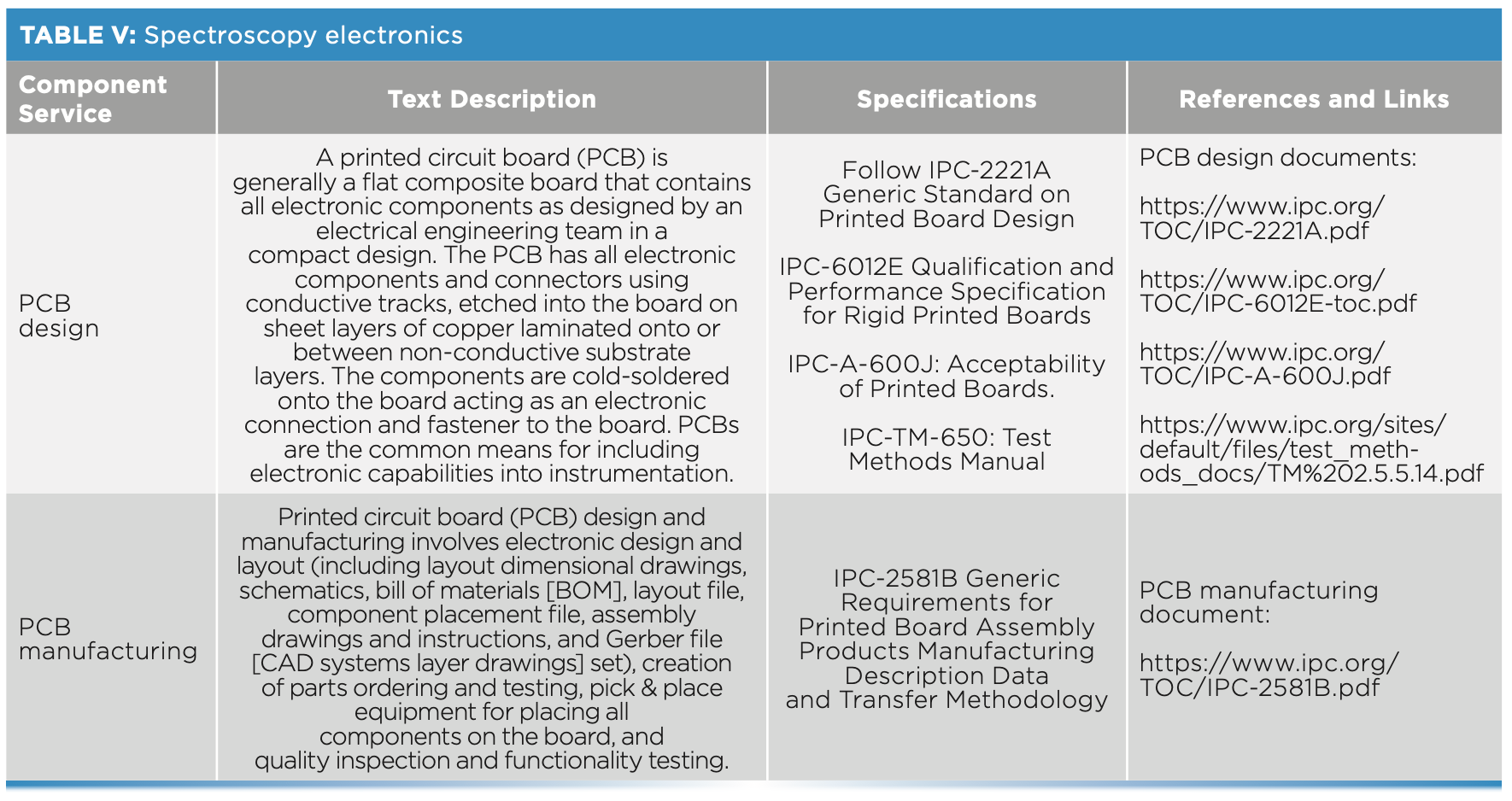
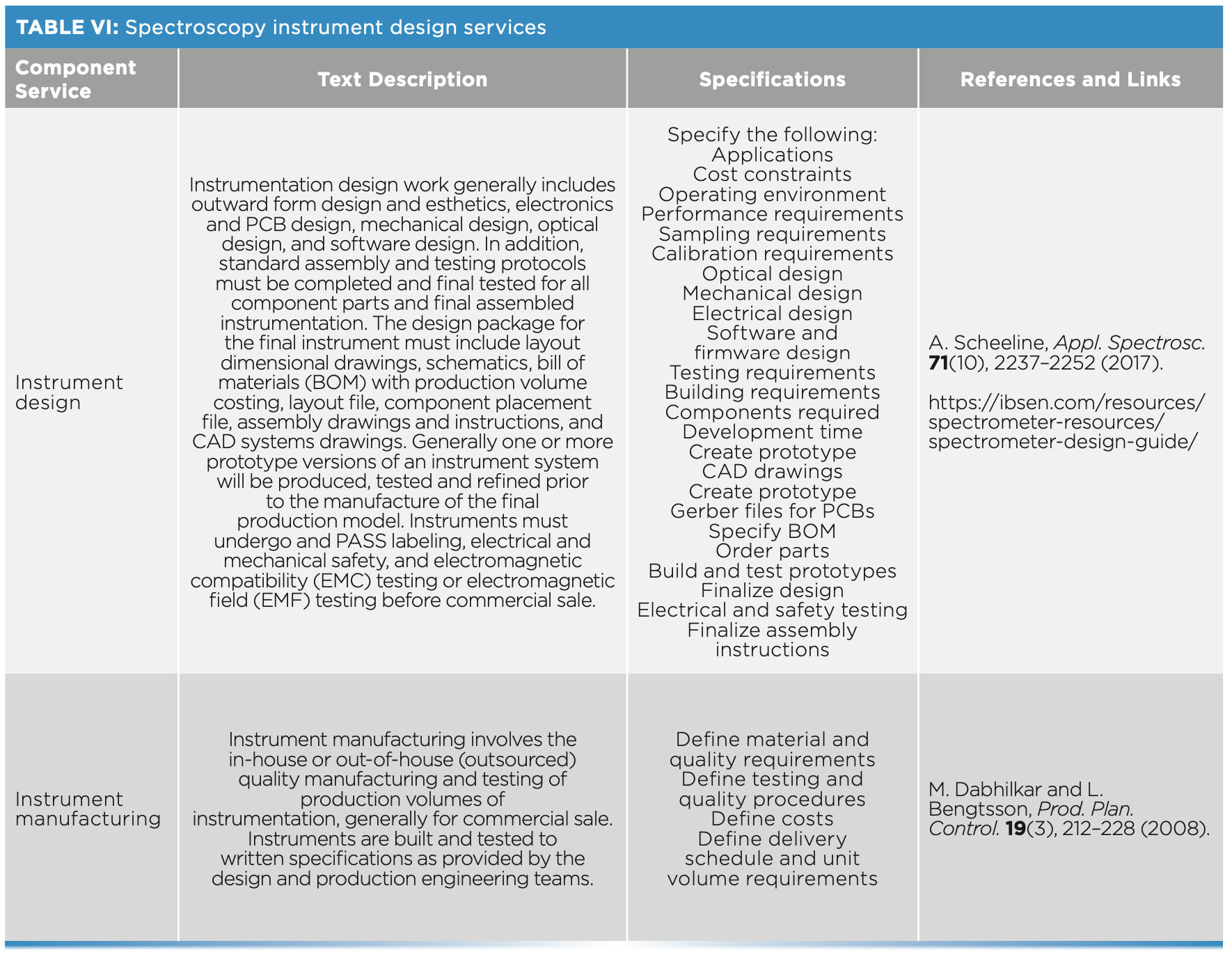
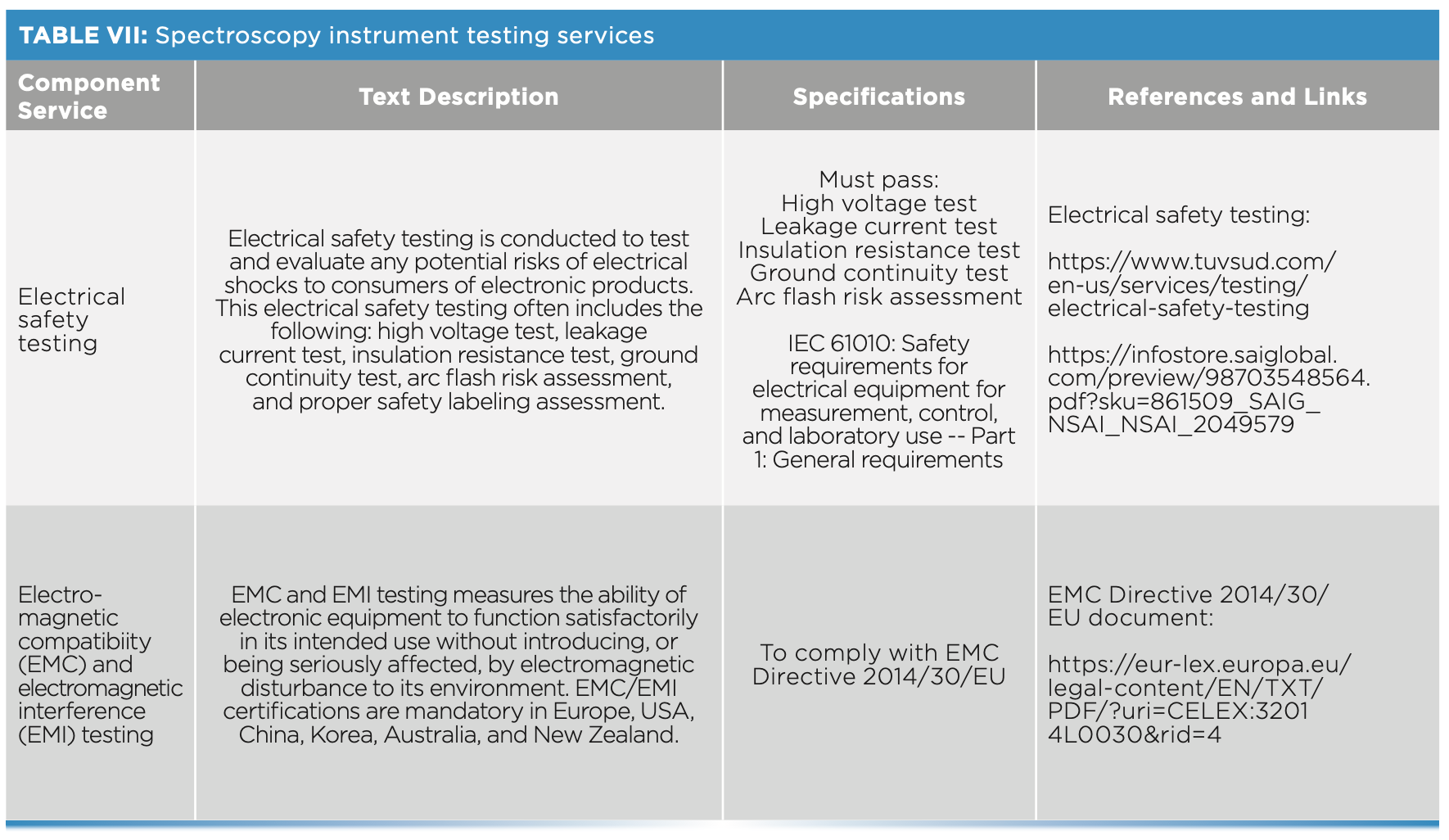
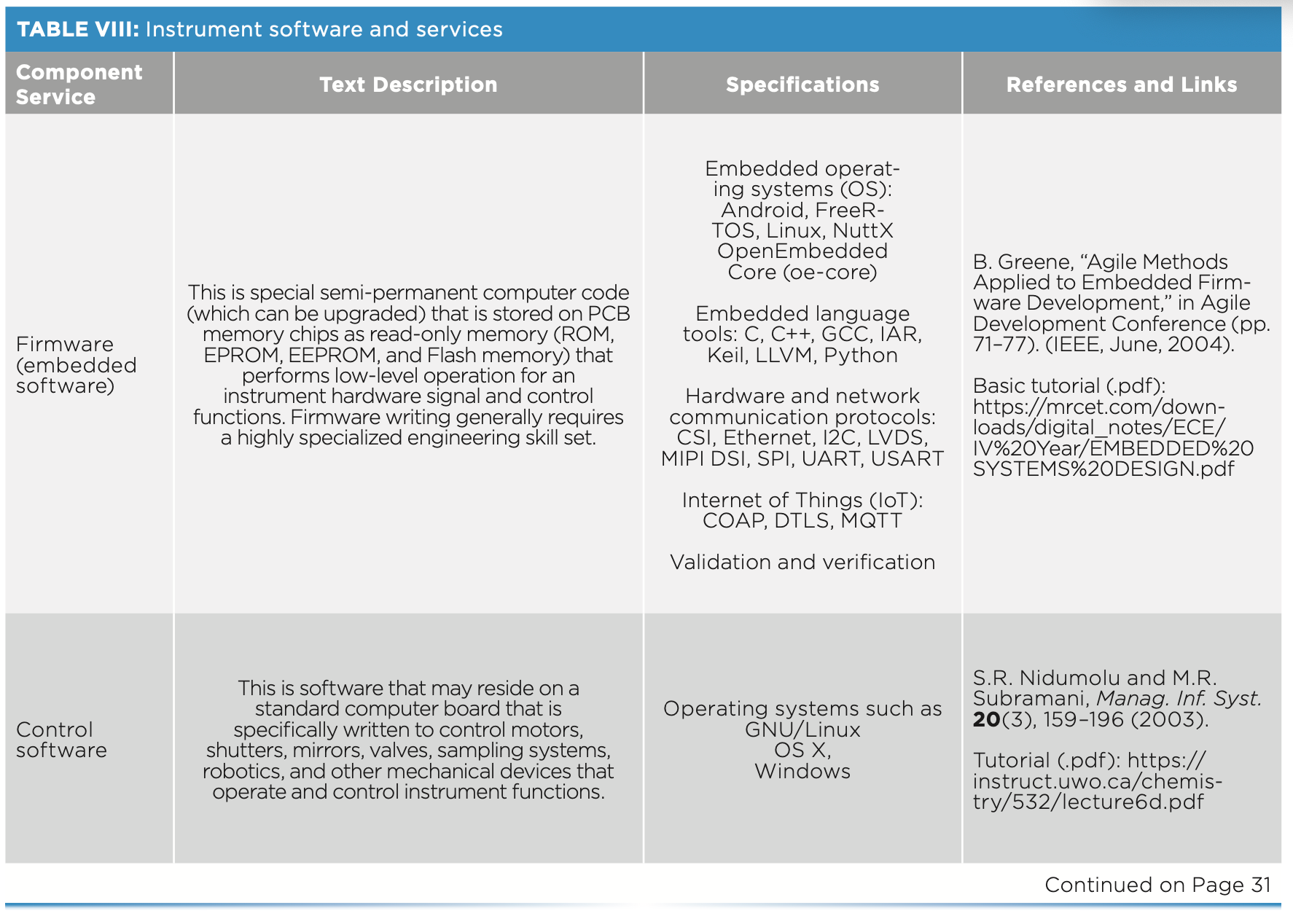
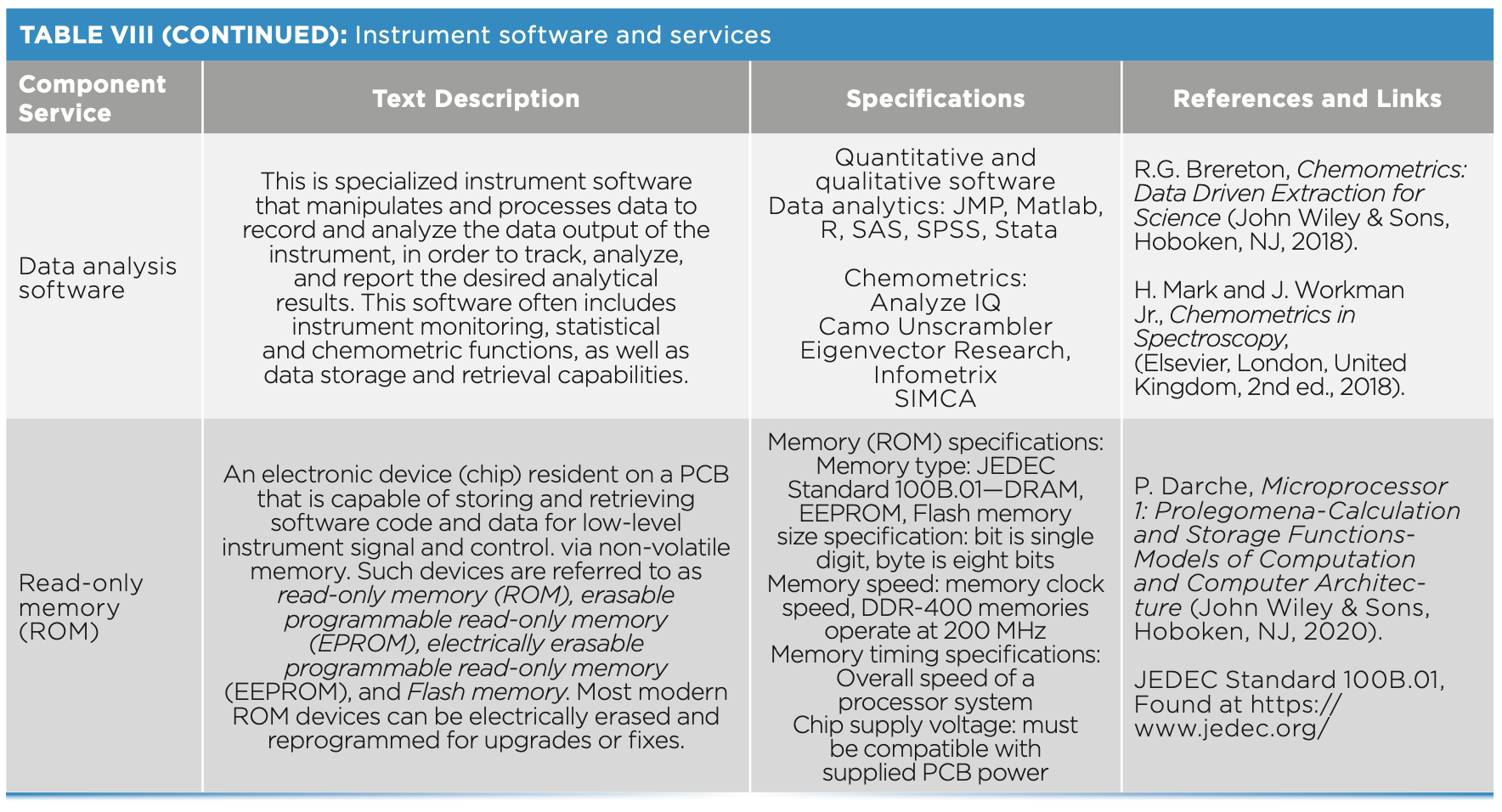
References
(1) J. Workman, Spectroscopy 37(3), 31–35 (2022).
(2) J. Workman, Spectroscopy 37(6), 42–45 (2022).
(3) J. Workman, Spectroscopy 37(9), 24–33 (2022).
(4) J. Workman, The Spectroscopy Instrument Components Terminology Guide 2022, posted in February 2022 at https://www.spectroscopyonline.com/
(5) J. Workman, The Concise Handbook of Analytical Spectroscopy: Physical Foundations, Techniques, Instrumentation and Data Analysis, in five volumes, first edition, UV, Vis, NIR, IR, and Raman (World Scientific Publishing-Imperial College Press, Hackensack, NJ and Singapore, 2016). ISBN: 978-9814508056.
(6) J.M. Chalmers and P.R. Griffiths, Handbook of Vibrational Spectroscopy (John Wiley & Sons, New York, NY, 1st ed., 2002). ISBN: 978-0-471-98847-2
(7) ASTM (American Society for Testing and Materials) ASTM Volume 03.06, “Molecular Spectroscopy and Separation Science; Surface Analysis” (ASTM International, West Conshohocken, PA, 2017).
Jerome Workman, Jr. is the Senior Technical Editor for Spectroscopy. Direct correspondence about this article to jworkman@mjhlifesciences.com ●
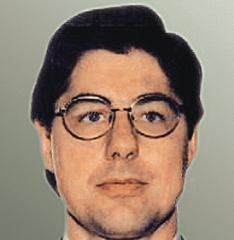
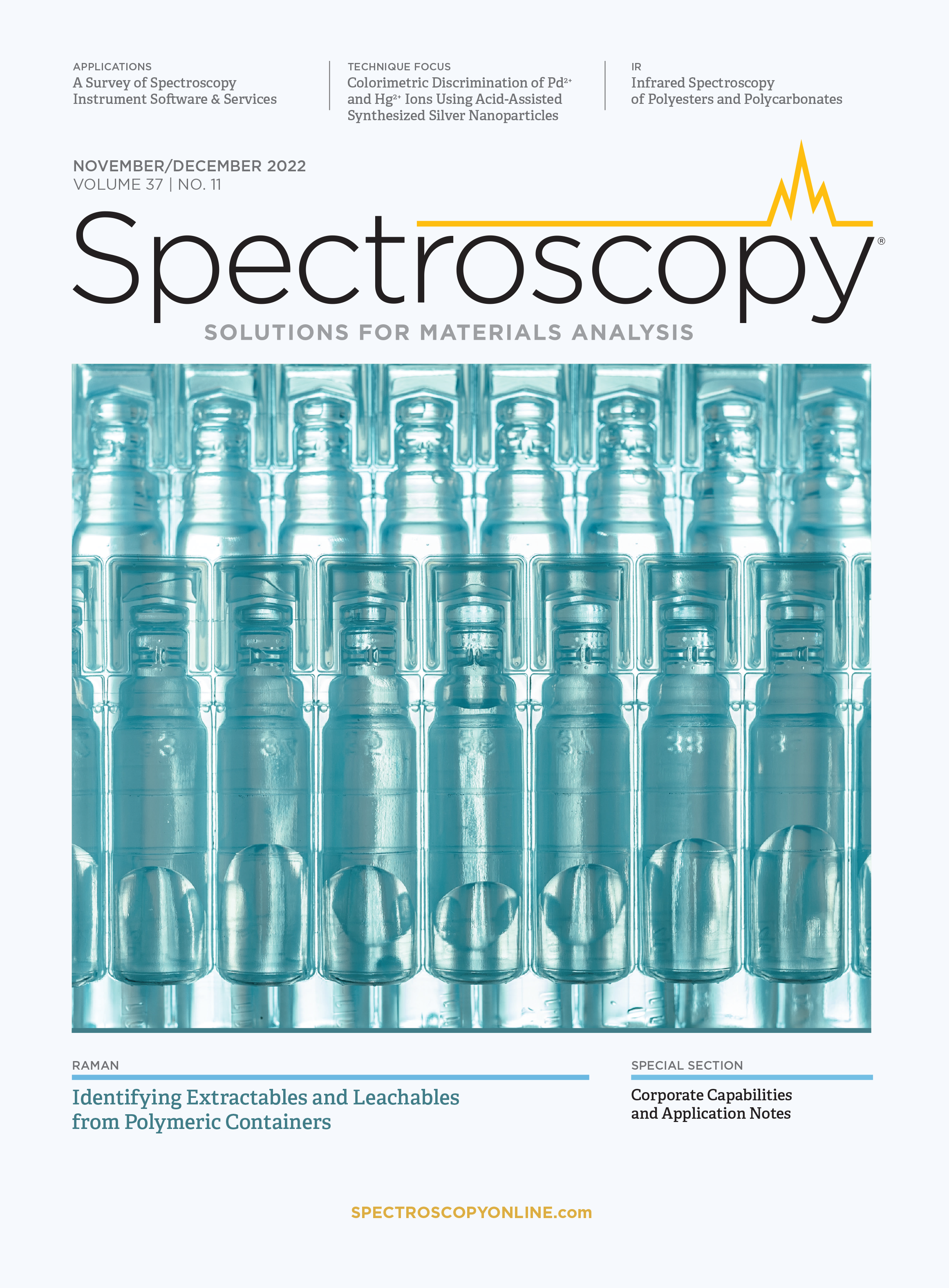
New Raman Spectroscopy Method Enhances Real-Time Monitoring Across Fermentation Processes
April 15th 2025Researchers at Delft University of Technology have developed a novel method using single compound spectra to enhance the transferability and accuracy of Raman spectroscopy models for real-time fermentation monitoring.
New Multi-Spectroscopic System Enhances Cultural Heritage Analysis
April 2nd 2025A new study published in Talanta introduces SYSPECTRAL, a portable multi-spectroscopic system that can conduct non-invasive, in situ chemical analysis of cultural heritage materials by integrating LIBS, LIF, Raman, and reflectance spectroscopy into a single compact device.